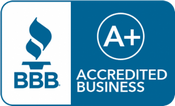
New Details for Employers Regarding Obamacare
Published on November 19, 2014
A new IRS Fact Sheet on Obamacare has been released and provides details to employers on some high-impact provisions of the Affordable Care Act. For the purposes of these provisions, employer workforce size is significant. Business owners, take note.
Background
Remember that, as the ACA was written, for months beginning after 12/31/13, an applicable large employer (ALE) is be liable for an annual assessable payment if any of its full-time employees purchases health insurance through a state exchange using a tax credit or cost-sharing reduction, and either the employer:
-
fails to offer minimum essential coverage to its full-time employees (and their dependents) under an eligible employer-sponsored plan (Code Sec. 4980H(a)); or
-
offers its full-time employees (and their dependents) a plan that is either unaffordable or doesn’t provide minimum value as defined in the Code (Code Sec. 4980H(b)).
Together, these are the “employer shared responsibility” provisions or the “employer mandate”.
The payment under Code Sec. 4980H(a) -- number 1 above -- is equal to the number of all (excluding the first 30) full-time employees multiplied by one-twelfth of $2,000 for each calendar month, while the payment under Code Sec. 480H(b) -- number 2 above -- is equal to the number of full-time employees who are certified to receive an applicable premium tax credit or cost-sharing reduction multiplied by one-twelfth of $3,000 for each calendar month. In no case, however, may the Code Sec. 4980H(b) liability exceed the maximum potential liability under Code Sec. 4980H(a).
A full-time employee for any month is one employed on average at least 30 hours per week. An applicable large employer (ALE), then, for a calendar year is an employer who employed an average of at least 50 full-time employees on business days during the preceding calendar year. Note that full-time equivalent employees are also taken into account when determining whether an employer is an applicable large employer.
That’s how it was supposed to go. However, IRS delayed implementing the employer penalty for all employers until 2015. Subsequently, IRS delayed the applicability of the employer mandate to mid-sized employers (i.e., those with between 50 and 99 full-time employees) until 2016, provided that the employer meets certain requirements. They also provided a “phase-in” rule for large employers (i.e., with 100 or more full-time employees) under which an employer won't owe a penalty for failing to offer health coverage so long as it offers coverage to at least 70% of its full-time employees in 2015, and 95% in 2016.
Determining workforce size
The newly released Fact Sheet explains that an employer's size is determined by the number of its employees. An employer with 50 or more full-time employees or full-time equivalents is considered an ALE under Obamacare. For purposes of the employer shared responsibility provisions, the number of employees a business has during the current year determines whether it is an ALE the following year. Employers make this calculation by averaging the number of employees they had throughout the year, which takes into account workforce fluctuations many employers experience.
What if I have fewer than 50 employees?
More than 95% of employers have fewer than 50 full-time employees or equivalents and are not subject to the employer shared responsibility provisions. It is therefore critically important to accurately calculate the number of employees a business has, particularly if the number of employees is close to 50 or fluctuates throughout the year. According to the new Fact Sheet:
-
If an employer has 50 or fewer employees, it can purchase health insurance coverage for its employees through the Small Business Health Options Program (SHOP).
-
Employers that have fewer than 25 full-time equivalent employees with average annual wages of less than $50,000 may be eligible for the Code Sec. 45R small business health care tax credit if they cover at least 50% of their full-time employees' premium costs and generally if the coverage is purchased through the SHOP.
-
All employers, regardless of size, that provide self-insured health coverage must file an annual return reporting certain information for individuals they cover. The first returns are due to be filed in 2016 for the year 2015. Reporting in 2015 regarding coverage in the 2014 year is optional.
What if I have exactly 50 employees?
The Fact Sheets notes that employers that have exactly 50 employees can purchase coverage for their employees through the SHOP.
Note that all ALEs must file an annual return reporting whether they offered health coverage, and if so, what coverage they offered their full-time employees. The first returns are due to be filed in 2016 for the year 2015. Reporting is optional for 2014. Additionally, ALEs with 100 or more full time or full time equivalent employees are subject to the employer shared responsibility provisions, effective for calendar year 2015, and so may have to make a shared responsibility payment.
As the guidelines on Obamacare continue to change, I urge you keep informed and seek out our assistance. I have no doubt things will change again soon.






